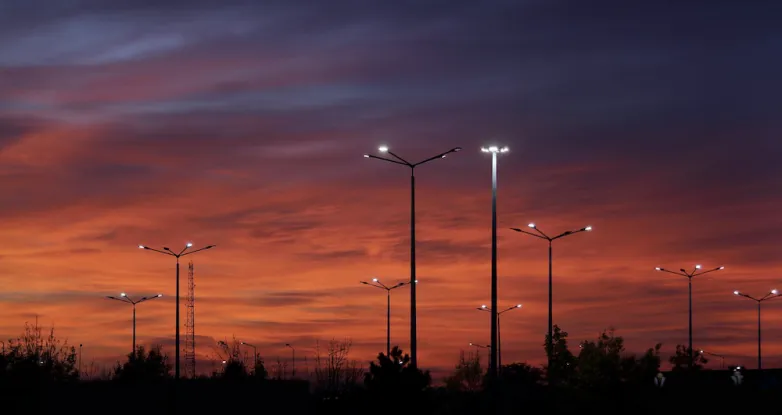The future of street lighting: Toward a 100% solar-powered world?

In recent years, the world has witnessed a growing shift towards renewable energy as an answer to climate change and the depletion of natural resources. Among the many advancements in sustainable technologies, solar-powered street lighting has emerged as a beacon of innovation, literally lighting the way forward. Could the future of public lighting be entirely solar-powered? Let’s explore the possibilities.
The Rise of solar-powered street lighting
Solar street light systems operate by harnessing sunlight through photovoltaic panels during the day, storing energy in batteries, and then using it to power LED lamps at night. This seemingly simple concept offers profound benefits:
Energy Efficiency: Solar lighting eliminates dependency on fossil fuels and reduces electricity consumption, making it a highly sustainable solution.
Cost Savings: While the initial investment in solar systems may be high, they drastically reduce maintenance and electricity costs over time.
Ease of Installation: Solar streetlights are often standalone systems that do not require extensive electrical infrastructure, making them ideal for remote or off-grid locations.
Environmental Benefits: By using clean energy, these systems contribute to reducing carbon emissions and air pollution.
Challenges to overcome
Despite the promise of solar street lighting, several challenges need to be addressed before it can become a global standard:
High Initial Costs: The upfront investment for solar panels, batteries, and installation can be a deterrent for many municipalities.
Energy Storage Limitations: Batteries have limited storage capacity and lifespan, requiring advancements in battery technology to ensure reliability during cloudy or rainy periods.
Maintenance Requirements: Dust, snow, or debris can obstruct solar panels, reducing efficiency and necessitating regular cleaning and upkeep.
Scalability Issues: Scaling up solar lighting in urban areas with high population density and significant energy demands poses logistical challenges.
Innovations driving the future
To overcome these barriers, researchers and engineers are developing innovative solutions through several approaches. One significant advancement involves the integration of smart technology, where solar streetlights are equipped with IoT-enabled sensors. These sensors optimize energy usage, enhance performance, and provide real-time maintenance alerts. Another key innovation is in advanced battery systems; new technologies, such as solid-state batteries, offer longer lifespans, higher efficiency, and greater storage capacity. Hybrid systems also play a crucial role by combining solar power with other renewable energy sources like wind or kinetic energy, ensuring a more stable and reliable lighting solution. Lastly, modular designs allow solar streetlights to be easily upgraded or adapted to meet specific needs, thereby reducing costs and increasing flexibility.
A vision for a solar-powered future
The adoption of 100% solar-powered street lighting would not only contribute to the global transition to renewable energy but also offer economic and social benefits. Well-lit streets improve safety, enhance urban aesthetics, and foster a sense of community. For rural areas, solar lighting can provide illumination where traditional infrastructure is lacking, boosting local development.
Governments, urban planners, and private companies must collaborate to accelerate the deployment of solar street lighting systems. Financial incentives, subsidies, and public-private partnerships could play a vital role in overcoming economic barriers.
While challenges remain, the trajectory of technological advancement and growing awareness of climate issues suggest that a world illuminated entirely by solar-powered streetlights is within reach. By investing in innovation and fostering collaboration, we can move closer to a future where sustainable lighting transforms our cities and communities, paving the way for a brighter, greener planet.
Also read
- How to Reduce Downtime in Solar Operations?
- Hyperparameter Tuning Good Practices for Robust Predictive Models
- 5 Critical Metal Forming Processes in Solar Panel Manufacturing
- Maximizing Efficiency with Low-Maintenance Solar Panel Systems
- Cyber Hygiene for Solar Companies: Protecting Your Data from Email Threats


